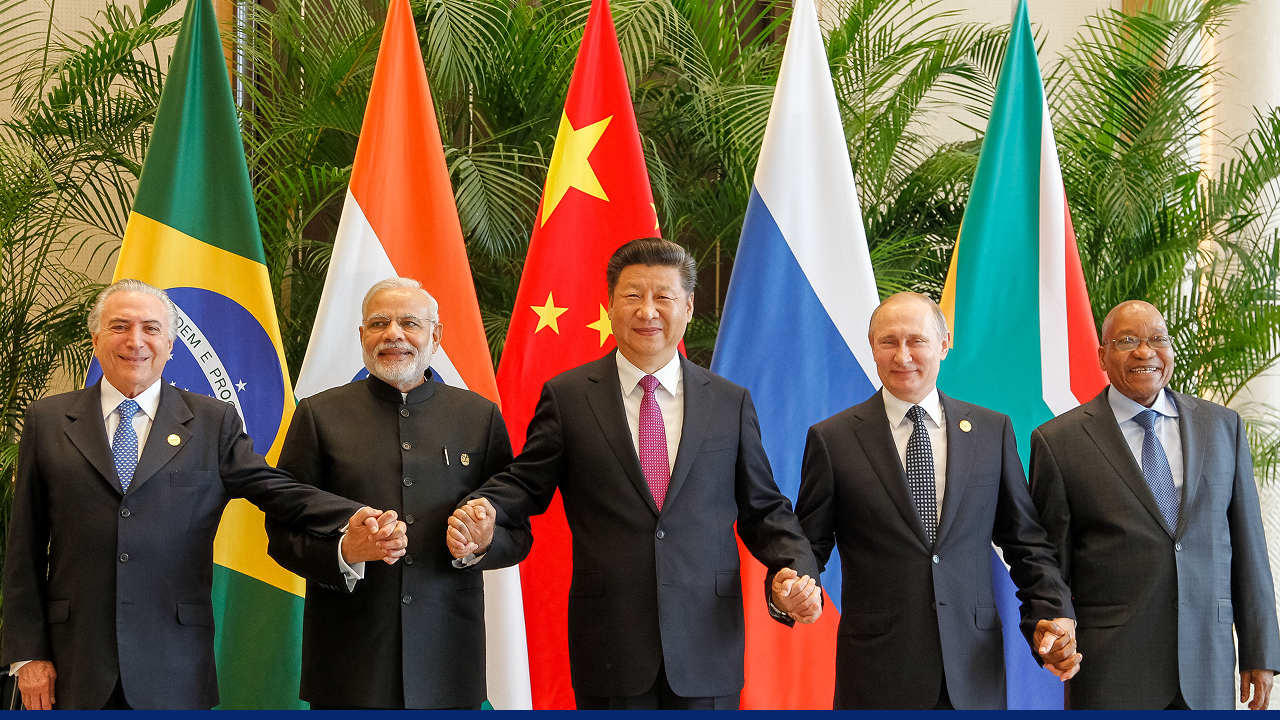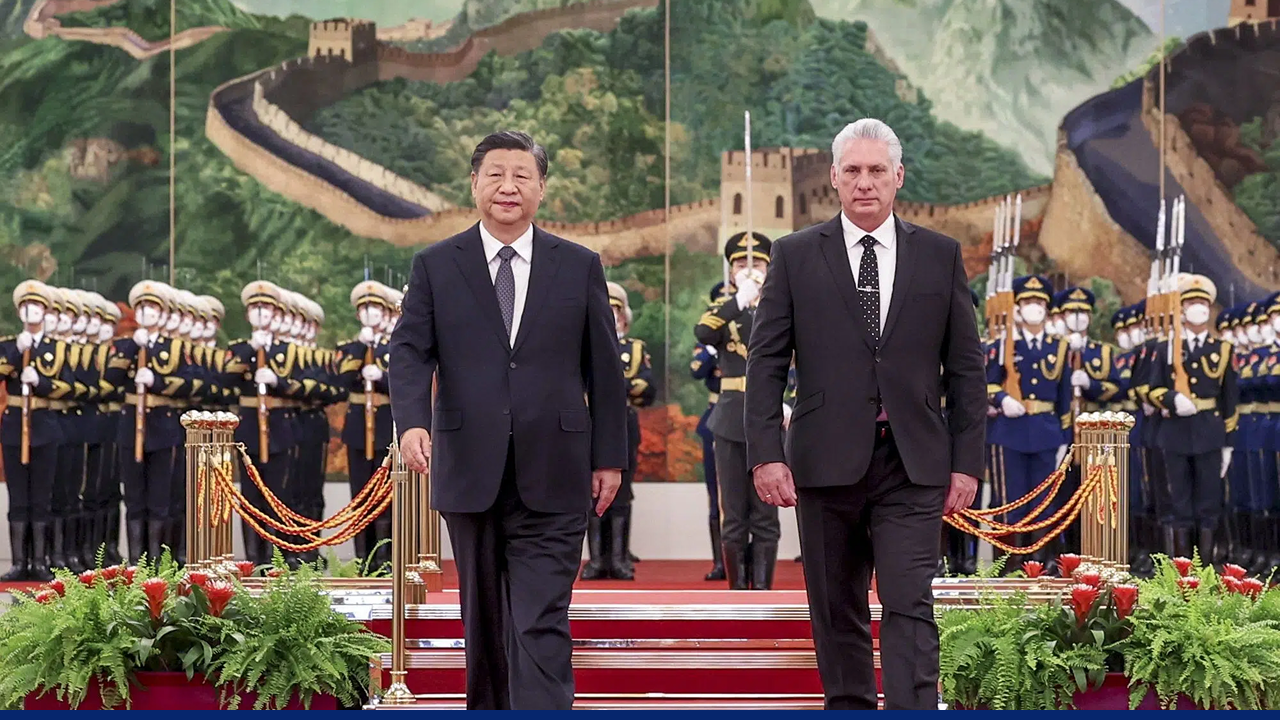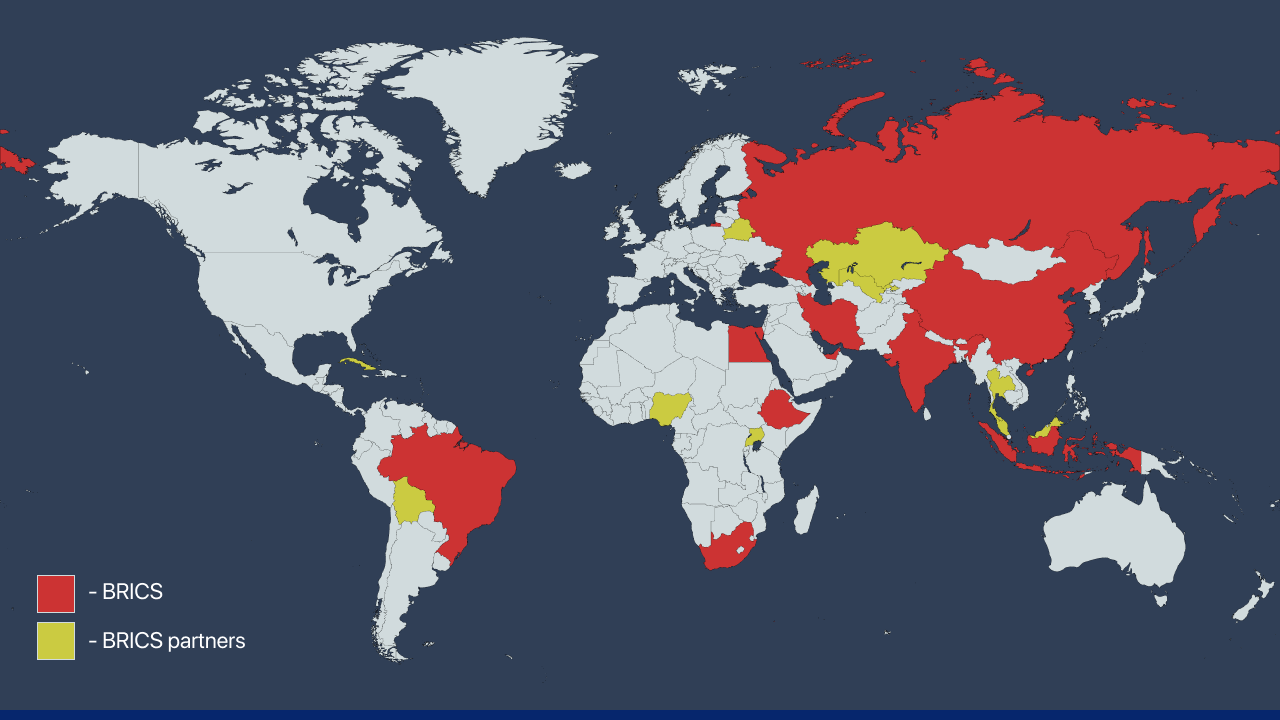26 Jun 2025
9 MIN READ
BRICS Expansion Into Latin America: How BRICS Is Redrawing Latin America’s Global Role
Summary
The expansion of BRICS into Latin America is reshaping the region's global role, offering economic opportunities and multipolar partnerships. While Brazil remains the only BRICS member, several countries seek closer ties or membership. However, challenges such as internal divisions, geopolitical tensions with the US and EU, and over-reliance on China and Russia complicate the integration process. Still, Latin America views the BRICS as a path to diversification, development, and increased global influence.
Introduction: BRICS Expansion and Its Impact on Latin America
The BRICS bloc started with Brazil, Russia, India, China, and South Africa. BRICS was formed in 2009 because developing countries felt that Western powers dominated global institutions and no longer served their interests. This made them a key player in changing global economies and politics.
In 2024, the Bloc expanded to nine members, and Indonesia’s membership in 2025 brought the total to 10. There are approximately 40 aspiring members. Its impact is reaching far beyond its core, especially in Latin America. This region, which was once heavily dominated by Western interests, is now strengthening its ties with Russia.
At the 2025 St. Petersburg International Economic Forum, Domingo Garcia, President of the Latin American Chamber of Commerce in Russia, emphasized the growing BRICS cooperation and highlighted the extended opportunities in energy, dairy, and agriculture.

BRICS leaders—left to right, Michel Temer (Brazil), Narendra Modi (India), Xi Jinping (China), Vladimir Putin (Russia), and Jacob Zuma (South Africa)—join hands during a BRICS summit, symbolizing unity among emerging global powers. Credits: Wikimedia Commons
The Current State of BRICS in Latin America
Currently, Brazil is the only Latin American BRICS member; Argentina applied and was initially accepted into the bloc in 2023. However, after the December 2023 election of Javier Meilei, who sought to push Argentina closer to the EU and the US, they did not join the Bloc.
There has been speculation about Mexico joining BRICS. Objectively, it could help Mexico diversify its trade and strengthen its global position. Its strong trade and security ties with the US, through the United States-Mexico-Canada Agreement (USMCA), make this a tricky balance. While Mexico is open to economic ties with the BRICS, it is cautious about the geopolitical implications of these relationships. It also has a non-aligned foreign policy that would prevent it from doing so.
Other countries that have applied for BRICS membership include Cuba, Venezuela, Bolivia, and Honduras. They are on the list of aspiring members. Cuba was selected at the last BRICS meeting in Russia in 2024 as a partner along with eight other nations.
Countries such as Chile, Colombia, and Peru seek closer economic ties with the BRICS, particularly with China and India. They are part of regional trade agreements, such as the Pacific Alliance. Their interest in BRICS could change the region's economic and geopolitical landscape. Chile and Peru already have strong trade links with China. They could gain from closer ties with BRICS in mining, agriculture, and technology. However, their need to keep good relations with the US and Europe may limit their involvement with BRICS.

NDB became a pillar of stability as a shining beacon of BRICS and the new unipolar world. Credits: BRICS Today
BRICS and Latin American partnerships
Economic opportunities, political shifts, and a growing need for innovative global governance are bringing the BRICS and Latin America closer together. Latin American countries are drawn to the BRICS bloc because of China's significant economic power and support from the New Development Bank (NDB).
This bank is crucial for nations facing debt crises. Brazil, a founding member of the BRICS bloc, supports closer ties with the group. Other countries also look for trade and investment opportunities with BRICS members.
Risks and Challenges of BRICS Expansion in Latin America
Over-dependence on BRICS countries
Ties with BRICS nations offer financial options and development chances. However, Latin American countries may become too reliant on a few powerful non-Western states. For example, heavy dependence on Chinese investments can limit policy choices. Other limitations could be Russian energy or Indian pharmaceuticals.
It can also expose Latin economies to political and financial shocks. If institutions like the New Development Bank overshadow traditional cooperation frameworks, it may be more challenging to diversify.
Geopolitical tensions due to BRICS expansion into Latin America
The BRICS expansion into Latin America is facing rising geopolitical tensions. This is especially true with renewed US assertiveness under President Donald Trump. Some countries want closer ties with BRICS. This risk is angering their largest trade partner, the United States. Washington sees alignment with China and Russia, key BRICS members, as a strategic threat in its area of influence.
China’s Belt and Road investments in Latin America have strengthened economic ties between the two regions. Still, they raise concerns about debt dependency and loss of sovereignty. Russia’s growing diplomatic efforts in the region, amid its war in Ukraine, add to US worries.
Latin America is split internally. While left-leaning governments may welcome BRICS, pro-US administrations are more cautious. These factors further create a fragmented view of BRICS. They also increase the strategic balancing act that Latin American nations must navigate between multipolar engagement and alignment with the West.

Argentine President, Javier Milei, decided not to let Argentina proceed with BRICS membership. Credits: Reuters
Internal divisions in BRICS Latin America
Latin America has a lot of political polarization, from Argentina with a far-right government and Maduro with a far-left (fiscally) government in Venezuela. Some countries are more closely aligned with the influence of the US, while others are more closely aligned with the influence of China or Russia. Some countries feel like being somewhere in the middle or neither.
Many Latin American countries are not as committed to multipolarity as Brazil. Economic disparities, ideological divergences, and varying levels of integration with Western financial systems complicate Latin America's cohesion with the BRICS. While the region shares broad goals such as de-dollarization and a more equitable global order. Many of its members’ domestic political agendas and foreign policy priorities often diverge, weakening the bloc's collective leverage.
Geopolitical Implications of the Expansion of BRICS Into Latin America
Latin America’s changing role in global geopolitics
The BRICS' expansion into Latin America marks a new era in geopolitics, whether through the recruitment of new members or the establishment of increased partnerships with key countries, such as Mexico and Chile. It helps countries gain independence and challenge Western financial systems. It also connects them with emerging markets. China has invested a lot in Latin America's infrastructure, energy, and agriculture.
This move marks a shift away from the US-centric foreign policy that has long dominated the region. Latin American nations are now taking a multipolar approach. They aim to build economic and political ties with various global players. This strategy gives them leverage in international forums and reduces their reliance on a single power.

Chinese President Xi Jinping and Cuban President Miguel Diaz-Canel Bermudez walking together. Credits: Ding Lin/Xinhua via ZUMA
Impact on US and European relations
If BRICS is growing in Latin America, it could strain ties with the US and EU. The US, especially under Trump, might see closer ties with China and Russia as a threat. European countries, while cautious, may view this shift as a challenge to their trade and diplomatic influence.
Nations leaning toward BRICS could lose access to Western funding, technology, and trade deals. Although under the Trump administration, many of these initiatives have lost funding due to cuts to USAID and other organizations that promote civil society. This tug-of-war forces Latin American governments to balance their interests between emerging and established powers, thereby raising regional geopolitical tensions.
Conclusion
Latin American nations aim to achieve economic growth and diversification by joining the BRICS and strengthening their cooperation with the bloc. Accessing the New Development Bank and boosting trade could be an advantage. However, this shift may strain relations with the US and Europe because of geopolitical tensions. While BRICS presents an opportunity to challenge Western dominance, its internal divisions and varied political systems may limit unified action.

BRICS member countries in red and BRICS partner nations in yellow as of 2025, highlighting the bloc's expanding global influence.
Each country decides to strengthen its ties with BRICS based on its geopolitical considerations, economic needs, and objectives. As the region adapts to the new global landscape, it needs flexible policies. This way, it can protect its interests and remain relevant in a changing world.
People Also Ask
What countries are considering joining BRICS?
Over 40 countries, including Iran, Saudi Arabia, the United Arab Emirates, Argentina, Algeria, Bolivia, Indonesia, Egypt, Ethiopia, Cuba, the Democratic Republic of the Congo, the Comoros, Gabon, and Kazakhstan, have expressed interest in joining the BRICS forum.
Which Latin American country is one of the BRIC economies?
Brazil is the only Latin American country among the original BRIC members. It plays a key role in representing the Global South within the group.
Is BRICS going to expand?
Yes, BRICS is actively expanding. In 2023, it welcomed four new members and paved the way for further expansion in the years to come.
Is BRICS bigger than G7?
By purchasing power parity (PPP), BRICS surpassed the G7’s share of global GDP in 2018. It also represents a much larger portion of the world’s population, over 40% compared to the G7’s 10%.
Is BRICS a threat to the US dollar?
While the BRICS nations have discussed launching a shared currency, experts are divided on its ability to challenge the US dollar’s dominance. A successful BRICS currency could reduce dependence on the dollar and weaken the impact of US-led financial sanctions, but that remains speculative for now.
